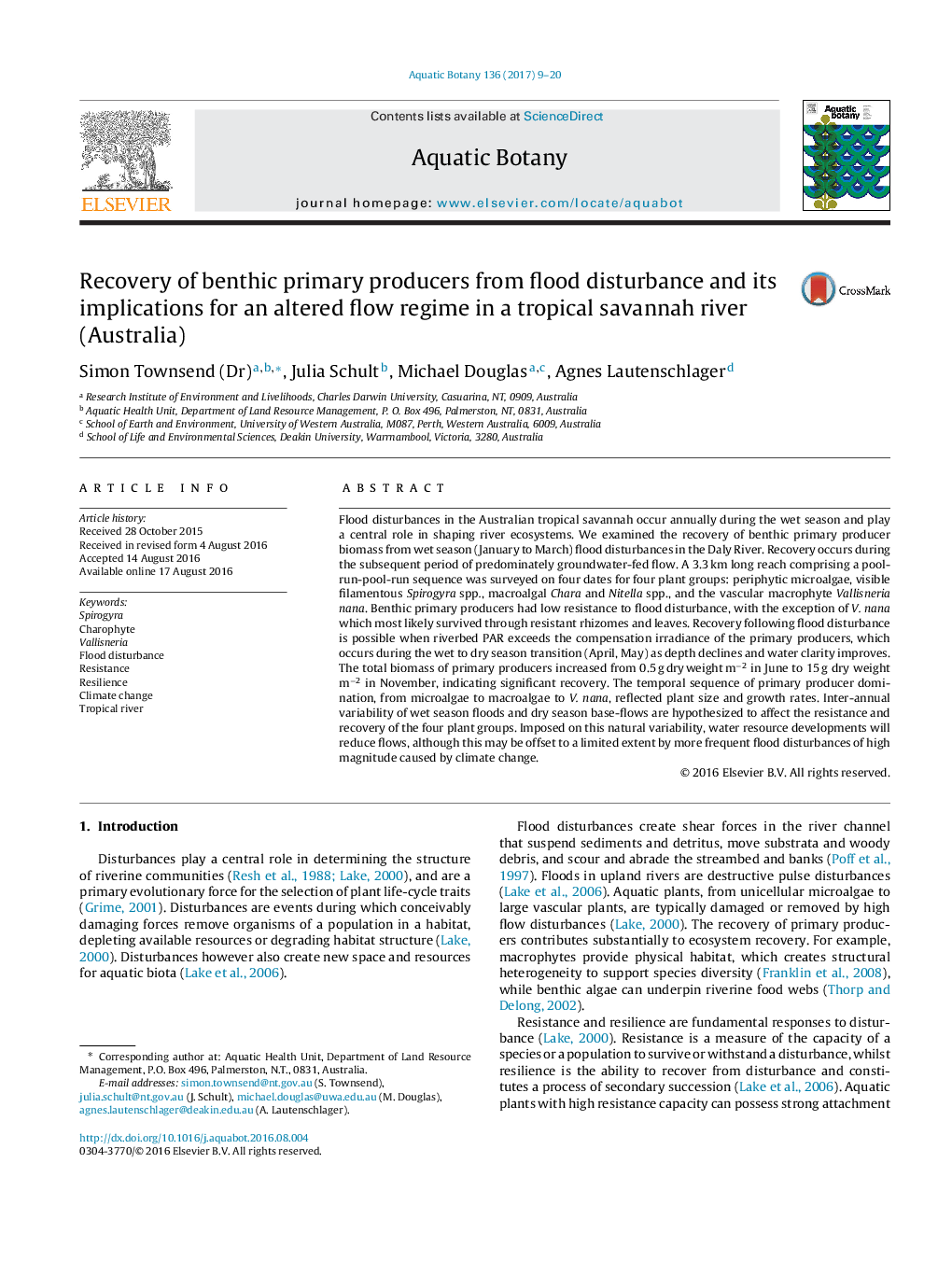| Article ID | Journal | Published Year | Pages | File Type |
|---|---|---|---|---|
| 4527515 | Aquatic Botany | 2017 | 12 Pages |
•Wet season floods remove almost all primary producers in river channels.•Recovery is dependent on groundwater inflow to the river for improved water clarity.•Recovery follows a temporal sequence, from microalgae to macrophytes.•Flood disturbance and recovery will be altered by climate change and water resource developments.
Flood disturbances in the Australian tropical savannah occur annually during the wet season and play a central role in shaping river ecosystems. We examined the recovery of benthic primary producer biomass from wet season (January to March) flood disturbances in the Daly River. Recovery occurs during the subsequent period of predominately groundwater-fed flow. A 3.3 km long reach comprising a pool-run-pool-run sequence was surveyed on four dates for four plant groups: periphytic microalgae, visible filamentous Spirogyra spp., macroalgal Chara and Nitella spp., and the vascular macrophyte Vallisneria nana. Benthic primary producers had low resistance to flood disturbance, with the exception of V. nana which most likely survived through resistant rhizomes and leaves. Recovery following flood disturbance is possible when riverbed PAR exceeds the compensation irradiance of the primary producers, which occurs during the wet to dry season transition (April, May) as depth declines and water clarity improves. The total biomass of primary producers increased from 0.5 g dry weight m−2 in June to 15 g dry weight m−2 in November, indicating significant recovery. The temporal sequence of primary producer domination, from microalgae to macroalgae to V. nana, reflected plant size and growth rates. Inter-annual variability of wet season floods and dry season base-flows are hypothesized to affect the resistance and recovery of the four plant groups. Imposed on this natural variability, water resource developments will reduce flows, although this may be offset to a limited extent by more frequent flood disturbances of high magnitude caused by climate change.
